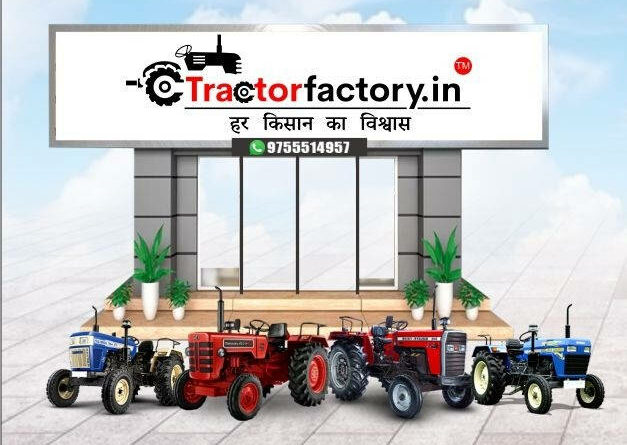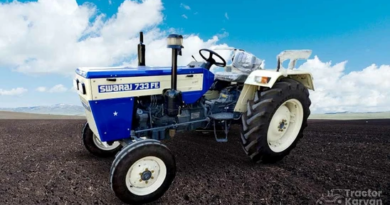Features to Check Before Buying a Second-Hand Tractor
When it comes to buying a second-hand tractor, making the right decision is crucial. A tractor is a significant investment, and ensuring that you’re getting a reliable machine is key to maximizing productivity on your farm or property. Buying a used tractor offers great savings, but it also comes with the risk of inheriting problems that might not be immediately obvious. To help guide your purchase, here are the essential features to check before buying a second-hand tractor:
1. Engine Condition
The engine is the heart of the tractor. The first thing you should check is the engine’s overall condition. Look for any visible signs of wear, such as oil leaks, rust, or cracks. Start the engine and listen closely for any unusual sounds, such as knocking or sputtering. If the engine runs smoothly and the exhaust emits only a small amount of white smoke, you’re in good shape. Don’t forget to check the oil level and color – dirty or low oil can indicate neglect. If you’re uncertain, consider getting a mechanic’s opinion.
2. Hydraulic System and Pumps
The hydraulic system controls important functions like the loader, lift arms, and implements. Check the hydraulic fluid for cleanliness, and make sure that the hydraulic pumps and cylinders are in good working condition. Look for any signs of leaks around the hoses and connections. Test the hydraulic system by operating the loader or lift arms to ensure they raise and lower smoothly without any jerking or hesitation.
3. Transmission and Gearbox
A tractor’s transmission and gearbox play a vital role in its ability to function smoothly. Test all the gears to ensure they shift properly without grinding or slipping. Check the clutch for smooth operation. If the tractor has a power shift or hydrostatic transmission, test these as well to confirm they are functioning as intended.
4. Tires and Wheels
The tires on a second-hand tractor can tell you a lot about its previous usage. Worn-out tires can be costly to replace, so check the tread depth and overall condition. Uneven wear may indicate that the tractor was used improperly or that there are alignment issues. Also, inspect the rims for any damage or cracks. If the tires are in good shape, it will save you money down the road.
5. Cabin and Controls
If you’re purchasing a tractor with a cab, check the interior for comfort and functionality. Ensure that all the controls, such as the steering wheel, pedals, levers, and dashboard, are in working order. The seat should be comfortable and free from major tears or damage. Make sure the climate control systems (such as heating and air conditioning) are functioning correctly, especially if you plan to use the tractor for long hours.
6. Frame and Chassis
The frame and chassis are critical for the structural integrity of the tractor. Look for any signs of cracks, welds, or dents, which could indicate the tractor was in an accident or subjected to heavy wear. Check the suspension and axle for any damage, and ensure that the frame is straight and solid.
7. Battery and Electrical System
Inspect the tractor’s battery for any corrosion or signs of leakage. A weak or old battery may need to be replaced soon, adding to your costs. Test the electrical system by turning on the lights, indicators, and other electrical components. Ensure that everything is working correctly, as electrical issues can be tricky and expensive to fix.
8. Oil and Fluids
Before purchasing a second-hand tractor, it’s a good idea to check the quality of the tractor’s oil and other fluids (coolant, transmission fluid, etc.). Dirty or low levels of these fluids could indicate that the tractor has not been properly maintained. Regular fluid changes are a sign of proper care, while neglected fluid levels can result in future mechanical problems.
9. Age and Hour Meter
While the age of the tractor is important, the number of hours it has been used is arguably more critical. A well-maintained tractor with a high number of hours may still have plenty of life left, while one that has been poorly maintained could have significant problems. Always check the hour meter, and if the reading seems unusually low for the age of the tractor, be cautious – the meter may have been tampered with.
10. Service History
Asking for the tractor’s service history is a must. A well-documented service record is a sign that the tractor has been maintained properly and cared for by its previous owner. Regular maintenance, such as oil changes and part replacements, can significantly extend the life of the machine.
11. Test Drive
Never buy a second-hand tractor without taking it for a test drive. Operating the tractor will give you an idea of how it performs under real-world conditions. Test the tractor in different gears, check how it handles turns, and see if it can handle the tasks you’ll need it for. Pay attention to how the tractor responds, as issues like poor handling or strange vibrations can indicate internal problems.
12. Brand and Model Reputation
Lastly, consider the brand and model of the tractor you’re interested in. Some brands are known for their durability and reliability, while others may have more frequent issues. Do some research to understand the reputation of the specific tractor model and read reviews or ask around in your local farming community.
Final Thoughts
Buying a second hand tractor can be a smart financial decision, but it’s important to thoroughly inspect the machine to avoid costly repairs later on. Make sure to check the engine, hydraulic system, transmission, and other critical features before making your purchase. If you’re unsure about any aspect of the tractor, it’s always a good idea to bring a mechanic along to help assess the machine. With the right checks in place, you can confidently buy a used tractor that will serve you well for years to come.
Happy farming, and may your second-hand tractor serve you as faithfully as the first!




